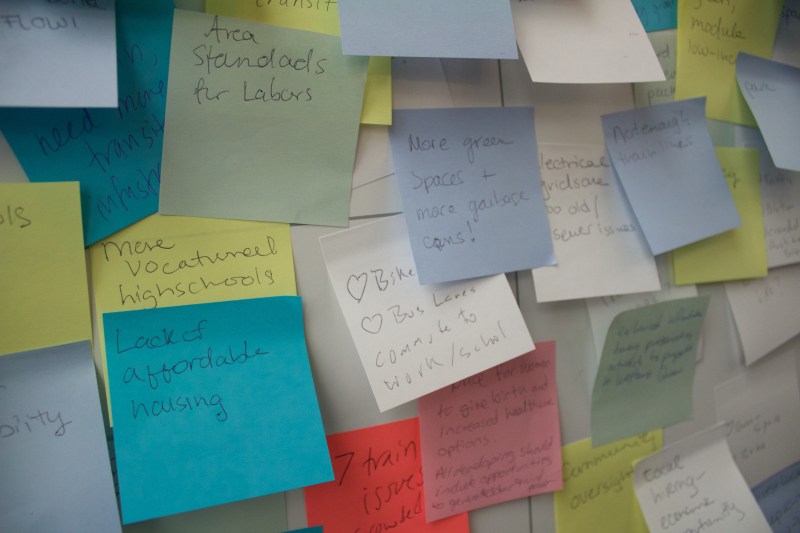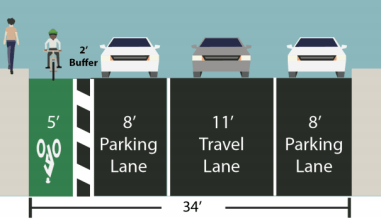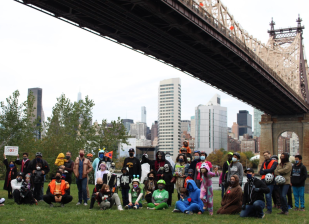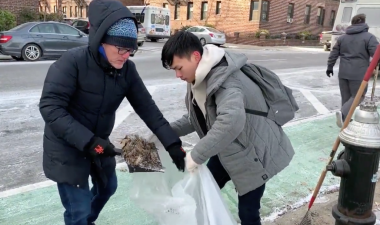Everybody Wants Something — But Especially Transit — at Sunnyside Yards

The city is moving forward with some plan to deck the Sunnyside Yard, but western Queens residents strongly called for any future development to improve, not worsen, the area’s transportation needs.
Hundreds of people lined up around the block to pack a LaGuardia Community College atrium to share their hopes and concerns with the city as it begins forming the Sunnyside Yard Master Plan, which will be the result of an 18-month public input process that began Wednesday night.
“This is a once-in-a-generation opportunity,” said Vishaan Chakrabarti of the Practice for Urban Architecture, which is in charge of the decades-long, multi-phase planning process for what could be built over one of the nation’s busiest rail yards. The area could become a new neighborhood between Sunnyside and Astoria with homes, schools, parks, hospitals, and stores. Chakrabarti aims to create place where residents’ daily needs can be met within a 20-minute walk.

“Rethinking what streets can be is an important part of the project,” Chakrabarti said. “Streets are one of the most basic building blocks of public space, but they’re not always the friendliest places. They’re often dangerous and full of traffic.
“A big question we ask is how can we deliver a better quality of life for residents?” Chakrabarti added. “There are a lot of daily indignities we put up with as New Yorkers, including noise, garbage, and those huge slush puddles that form after a snowstorm. Everyone generally understands that this is an opportunity for western Queens to think about its future and address some of these things that have always been problematic here.”
In February 2017, the city and Amtrak announced that it is possible to deck 80-85 percent of the yard, which would create space for a massive development. Housing is critically needed in New York, but so is better transportation, existing residents said, citing massive development already beginning to be occupied in Long Island City.
“I’m concerned about transit infrastructure being able to support this project because the 7 train is a nightmare right now,” Sunnyside resident John Zrinzo said. “With all of the building in Flushing and LIC … will the line be able to support it?”
Beyond the Sunnyside Yard, the city projects that the population of Queens will increase by 80,000 in the next 20 years. As such, there was a contingent of steering committee members that opposes new housing on the site in favor of public transportation and open space.
“These are things we need now, even if nothing happens,” said Sheila Lewandowski, a member of the steering committee. “The steering committee could walk out saying the best thing to do is leave it alone.” Melissa Orlando, another steering committee member, said she also favors the status quo, too, but acknowledged that accessible transit and green space are desperately needed.
Several people also brought up the possibility of a multi-modal transit hub, which could connect a new subway line or station, a Sunnyside LIRR station and a bus terminal. There is a proposed Sunnyside LIRR station at Skillman Avenue and Queens Boulevard, in the East Side Access plan, but it’s not currently funded.
For many, the bottom line was to not mess up the opportunity.
“I’m not afraid of development,” Astoria resident Rob Reichenbach said. “Now we have a wasteland that divides Sunnyside and Astoria. Development can knit the communities together.”



